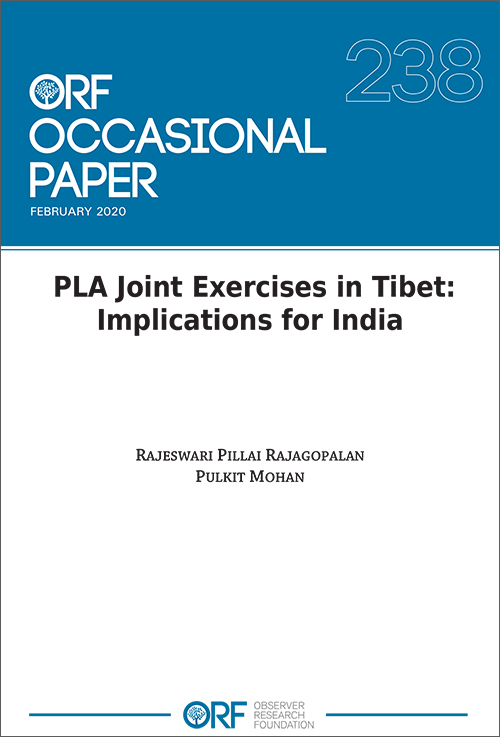There are only a few areas along the border where India has the advantage of being on higher ground.
The PLA also reportedly conducted “civilian-military” integration mock exercises in Tibet in June 2018.
Tibet Military Command is now armed with a new vehicle-mounted howitzer in seeking to enhance the high-altitude combat proficiency as part of the broader border security functions. The new howitzer, supposedly a PLC-181, was deployed with an artillery brigade in Tibet in 2017.the howitzer comes with a 52-caliber cannon and a range of over 50 km, able to shoot laser-guided and satellite-guided
China has already developed a 96,000-km-long road network in Tibet[50] and a 2,000-km railway line from Xining, Qinghai province to Lhasa in Tibet.[51] The latter was extended to the city of Shigatse, close to the Indian border, in August 2014.[52] Further, China is developing a railway line from Lhasa to Nyingchi in the East in close proximity to the Indian state of Arunachal Pradesh, which is to be completed by 2021.
China additionally plans to launch a 1,700-km railway line from Sichuan to Tibet, connecting with areas that border Arunachal Pradesh; it is to be completed in 2026.
China was set to build three new airports in the TAR, in addition to the five existing ones in the region.[56] China has also been upgrading its underground facilities at a small military town known as Lhoka, possibly to accommodate guards and troops, as well as artillery ammunition and missiles.
Moreover, Beijing has developed a 1,080-km-long oil pipeline from Golmud to Lhasa with a carrying capacity of 0.5 million tonnes per year.[58] The establishment of significant logistics and oil depots in the TAR suggest that China is planning for not only mobilising forces at the border quickly but also for sustaining them on the border areas for longer periods of time.
Improvement in India’s border infrastructure is crucial for ensuring better mobility of troops and the logistics of storing and moving weapons, ammunition and missiles.
There are strategic infrastructure projects of great significance that have faced problems which need to be addressed rapidly. The Darbuk-Shyok-Daulat Beg Oldi road (255 km) which runs near the LAC in eastern Ladakh has suffered from realignments and poor constructions since September 2001.
The BRO has been entrusted with the construction of 61 important roads. However, only 35 of these strategic links have been completed.
India’s border infrastructure problems are further magnified by the multiplicity of agencies involved in securing the border. For example, the Indian Army, Indo-Tibet Border Police, Border Security Force and the Assam Rifles are all responsible for managing the border on the Indian side. This has meant that both the Ministry of Home Affairs (MHA) and the Ministry of Defense (MoD) have responsibility for the Sino-Indian border and the lack of coordination between different ministries and agencies has resulted in difficulties. For its part, China’s border management is managed by a single unified commander who is responsible for the TAR forces. India will therefore have to rectify its border systems and work towards a unified command structure to strengthen its defenses.
it is important to note that India faces tougher geological conditions in improving its infrastructure. The Himalayas is a young fold mountain range and is still rising and therefore, the construction takes place on fissured rocks mixed with clay. Also given the North-South flow of rivers on the Indian side, developing lateral connectivity is also challenging. While the terrain certainly is a problem, there are challenging tasks for China as well on specific sectors which it has managed to overcome. On the Indian side, the problem is primarily related to scaling.
shortage of not only qualified and skilled personnel but also heavy equipment for drilling through the mountainous terrain. Local political interference by non-qualified contractors has also been an issue..
significant delays over the past many years in the completion of projects should be an imperative for a debate on the effectiveness of the BRO.
The former Indian Air Force Air Chief Marshal B.S. Dhanoa, for instance, had noted the big increase in the number of Chinese aircrafts in the TAR. He mentioned in particular the deployment of Sukhoi-27 and J-10 aircraft for year-round operations, giving the PLAAF possibly a major tactical boost. This is a new trend as against the earlier practice of deploying these aircrafts during summer months alone.[73] The overall mix of multi-role fighter and strike aircraft of the PLAAF can address any possible attrition during a conflict.





